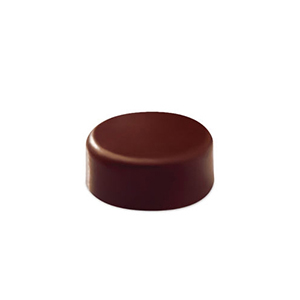Pomati Tempering machine?
Posted in:
Classifieds ARCHIVE
Alek -
There are no companies in the US making continuous tempering machines in the same class as the names you mention - Pomati, Selmi, FBM, Savy Goiseau, etc., and Gami, Bakon, Chocolate World ... names you did not mention.
If you can, I advise you to take a look inside the machines to see how they are made. What is the size of the tempering auger and pipe? How is the chocolate warmed and cooled? What safety features are in place to keep the operator from inadvertantly damaging the machine?
If you look at the evolution of the technology you will see that these all operate using a screw to transport chocolate from a working bowl where all the crystals are melted out through a cooled pipe to generate and mix the crystals. There is an originator of the technology and all of the follow-on brands are engineering copies to one extent or another. That's one of the reasons they all look so much alike.
However, it turns out the there are significant differences in things like the shape of the working bowl (e.g., deep and narrow versus wide and shallow), the auger and the pipe (e.g., the diameter of the pipe and the depth of the auger flights), and the position of the temperature sensors among other details, that make a difference with respect to overall tempering performance, including the ability to resist over-tempering over the course of the work day. In addition, some machines are heated and cooled with water jackets, some use heated resistance wire and recirculating cooling gas, and others use a combination of these techniques; and there are advantages and disadvantages to the various approaches. There are machines, from LCM and others, that use different approaches to tempering. The LCM approach, for example, makes it impossible (in their minds) to add a dosing option.
You should also pay close attention to the power of the motor driving the tempering auger (as well as the ratio of the gearbox) if you are going to be tempering two-ingredient (high viscosity) chocolate. I can tell you from experience that some motors are under-powered and will burn out faster than others. Two-ingredient chocolate also tends to be more abrasive than conventional couverture - especially that made in Indian wet-grinders - so that has an impact on the bearings and seals on the tempering motor, gearbox, and pipe.
Continuous tempering machines need to create and maintain a delicate balance of factors to temper and maintain temper. If you are making chocolate from beans, two different batches of the same recipe might not have identical tempering profiles. If they taste at all different and/or have a different mouth feel, the tempering will be different. This is one of the hardest points for some people to wrap their heads around. These machines are not artificially intelligent and they can only do what you tell them to do, and the vast majority of them are designed to work with commercial couverture that tend to be of a lower viscosity.
Other things to consider are the location the machine will be in. If it's in a kitchen that will never be seen by the public, how important is the sheet metal? Are you paying for bling or performance? Which is more important to you?
Another thing to consider is that some machines are made to order (so they can be customized) while most are built in advance and you can only buy stock configurations.
Finally, I have learned to pay attention to the following phrase, " You do not get what you don't pay for. "
updated by @Clay Gordon: 07/24/16 13:59:15


